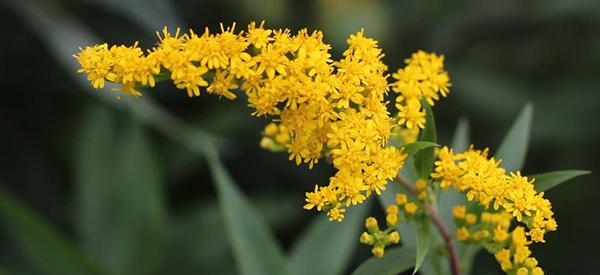
Goldenrod
Goldenrod or Golden Rod is a flowering herbaceous perennial that is part of the genus Solidago. The plant is also known as Aaron’s Rod; Canadian, Early, or European Goldenrod; Woundwort; Wound Weed; and Goldruthe.
There are more than 150 different species which means that there are some differences when it comes to appearance and hardiness. The most popular varieties for gardeners are Seaside, Bog, Zigzag, Old Field, and White Goldenrod.
While this herb is a welcome addition to gardens and open land in many places, it is considered an invasive weed in others. The taller species thrive in open areas such as fields, woodlands, grasslands, and forest clearings.
The History of Goldenrod
Interestingly, the name Solidago means “to make whole”, which is linked to its use to heal and soothe. Two species of Goldenrod in particular – Solidago canadensis and Solidago Virgaurea – have been used for centuries to treat a wide range of illnesses and symptoms.
Preparations made from this plant have historically been used both topically to treat minor wounds and inflammation, as a gargle, chewed to relieve toothache, and taken internally as a diuretic and antibacterial for kidney, digestive, and respiratory problems.
In some communities, the leaves of some species are cooked as vegetables or used to make tea. It has also been used for centuries as a natural dye.
Today the perception of Goldenrod varies depending on where you are. For many in Europe and the UK, this plant is a welcome addition to the garden. In contrast, there are people in the US who consider it a weed, and Germany and China have listed it as an invasive species.
Where This Plant is Found
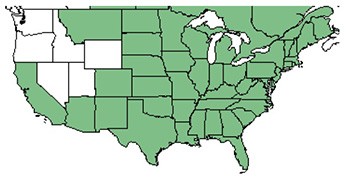 Many Goldenrod species are native to North America and Canada and are found growing wild at the sides of roads, in woodlands, swamps, grassy areas, and at various altitudes including on mountainsides. There are only six US states where this herb is not found.
Many Goldenrod species are native to North America and Canada and are found growing wild at the sides of roads, in woodlands, swamps, grassy areas, and at various altitudes including on mountainsides. There are only six US states where this herb is not found.
Other species are native to Asia and Europe. The appeal for gardeners of this hardy flowering plant has meant that US species are now found elsewhere in the world and a few European species have been introduced in North America.
⇒ The Complete Map of Edible Plants: Find Out What You Have in Your Area! (Video)
How to Identify Goldenrod
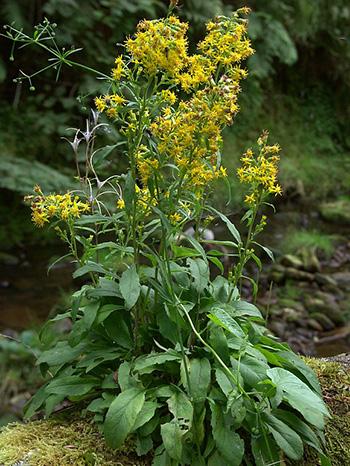 It is not easy to describe Goldenrod as there are significant differences between the species. For instance:
It is not easy to describe Goldenrod as there are significant differences between the species. For instance:
- They range in height from below 1 foot / 30 centimeters to over 6 feet / 1.8 meters
- Some have single stems with a few branches while others have multiple stems and form more of a bush.
- Flowers can be in clusters of tiny blooms, larger and flat flowers, or feathery, loose clusters.
However, there are a couple of characteristics they do share. Firstly, they have a long flowering season (mid-summer to late winter) and all varieties except for one have yellow or yellow-gold blooms.
Because of the great variation, we will look specifically at characteristics of the two varieties used for health and well-being remedies: Solidago canadensis or Canadian Goldenrod and Solidago Virgaurea or European Goldenrod.
Height:
- Canadian Goldenrod: This erect plant reaches up to 1 ½ meters / 5 feet.
- European Goldenrod: The species grows to about 100 centimeters / 40 inches.
Leaf:
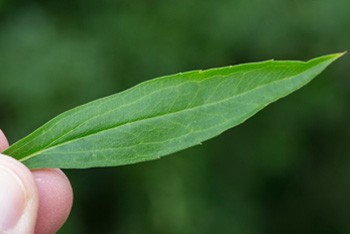
- Canadian Goldenrod: The leaves are dense, tapered at both ends, toothed, and slightly furry.
- European Goldenrod: The leaves are pale green, elliptical, and have toothed edges. The leaves closest to the top of the stem are narrower and smooth-edged.
Stems:
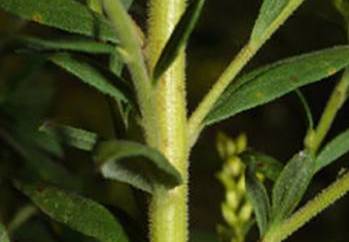
- Canadian Goldenrod: There are short hairs on the upper half of the stem but none on the lower half.
- European Goldenrod: These stems are usually downy, may have a reddish tinge, don’t branch out lower down, and are thick in relation to the height of the plant.
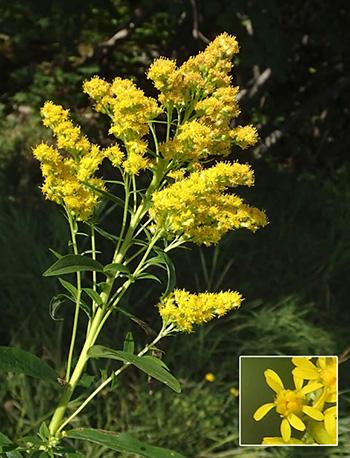
Flower:
- Canadian Goldenrod: The golden yellow flowers form a pyramidal shape along the curving stems with the blooms all sitting on the upper side of the stem.
The stamens are orange-yellow. Each individual flowerhead is only ½ centimeter / 0.2 inches in diameter.
- European Goldenrod: This plant produces a cluster of stalked flowers at the end of the growing stems.
Flowers mature and ripen from the bottom upwards towards the tip of the stem. The flowers are larger than those of Canadensis.
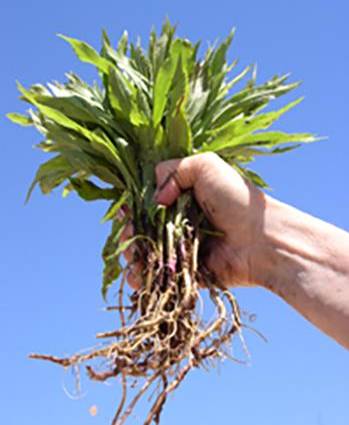 Roots:
Roots:
- Canadian Goldenrod: This species multiplies and spreads via underground rhizomes that form thick, horizontal roots.
- European Goldenrod: Like its Canadian cousin, the root system consists of branching underground roots growing from woody rhizomes.
These two valuable varieties of Goldenrod and fortunately sufficiently different to be able to tell them apart.
How to Grow Goldenrod
These plants are easy to grow. In fact, some gardeners may say they are too easy and will take over your garden if you let them. They are hardy and can handle a lack of water, hot summers and cold winters, and poor soil. They also seem resistant to most pests and diseases other than powdery mildew.
Both Canadian and European Goldenrod spread fast and easily thanks to their rhizome and root systems. If you don’t want them to multiply, it would be better to either plant them in containers. Alternatively, be vigilant and ruthless if they spread too much.
A sunny position is necessary and, while soil type is not important, the ground the plant is in should be well-drained. In fact, rich soil and fertilizer will not improve the health of the plant or blooms and can lead to weak stems and fewer flowers.
These plants can be grown:
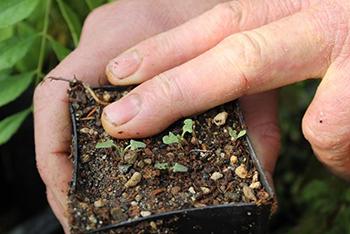
- From seed: You can do so directly into your garden by scattering the seeds onto the soil surface (don’t cover them) in autumn or spring. The problem with this method is that if the plants grow too close together, they may have insufficient space and air circulation. This can lead to poor growth and/or disease. If you don’t want existing plants to self-seed, remove the blooms when they are finished but before they go to seed.
- By division: Cut through the root mass of large, established plants in spring and immediately replant the removed section and fill in the hole left next to the parent plant.
Of course, you could just buy established plants from a garden center or plant nursery.
How to Harvest This Plant
As with any plant, the first step is to make sure that you have correctly identified the plant as Goldenrod. This is not a challenge if you bought the plant or seeds from a reputable dealer. It can be more difficult if you are harvesting or foraging in the wild. Secondly, only harvest from robust, healthy plants.
When you collect material is also important, and this varies depending on what part of the plant you are harvesting.
- Leaves: These are best picked when flowers are budding but not yet open. Make sure you only take healthy-looking leaves that are free from any signs of disease.

- Flowers: Select flowers that are mature blooms. In other words, ones that are open and not showing signs of shriveling or dying.
- Seeds: Your seeds should be collected when the seed pods form / the plant goes to seed.
- Roots: Unearth the roots after the first frost in autumn. Note, though, that you may wish to use root matter in some preparations, but it is not particularly valuable in terms of active ingredients.
Regardless of what plant material you harvest, it is essential that they are thoroughly dried. The roots must also be well washed and chopped up before drying.
It’s better to harvest as much as you can when the weather is still warm because it can be difficult to dry plant matter properly when the air is cool and – even worse – damp. Spread leaves, flowers, etc. out on racks in a warm area where there is good air circulation. Alternatively, you can use your oven on an extremely low setting but keep an eye on things so that you don’t burn the Goldenrod.
What Goldenrod is Good For and The Natural Remedies Made From it
It should be noted that while studies have been done – and no doubt more will be conducted – in terms of assessing the value of Goldenrod, most evidence is non-clinical. However, the anecdotal evidence of centuries of experience does carry significant weight!
Goldenrod has been and is used to:
- Ease of inflammation
- Lessen pain including arthritis, gout, and other joint pain
- Reduce muscle spasms
- Treat bacterial infection
- Treat fungal infections
- Act as a diuretic
- Boost immunity
- Treat or soothe skin conditions
- Reduce and ease hemorrhoids
- Lower blood sugar
- Treat urinary tract infections
- Soothe mouth and throat inflammation
- Speed up the healing of minor wounds
- Ease the symptoms of colds, ‘flu, and hay fever.
If you wish to either make your own Goldenrod remedies or buy them from a reputable retailer, there are a range of options to choose from depending on what you want the preparation for: Teas, Tinctures, Oil.
You could also include this herb in cooked or baked food or even use it to naturally dye fabrics a warm yellow.
What Parts of The Plant Are Used in Remedies?
It appears that it is every part of the Goldenrod plant that grows above ground that is beneficial. However, the most potent in terms of the active ingredients is any part of the flower head.
A DIY Goldenrod recipe
Having a salve made with Goldenrod is a useful addition to an herbal first aid kit. There are two phases in this recipe.
1. Making the Goldenrod Infused Oil
You have two options: you can make your own or you can buy it. Here’s how to make it:
Ingredients
- Dried Goldenrod flowers
- Carrier oil (sunflower, olive, or sweet almond)
Method
- Fill a jar ¼ or ½ full of flowers
- Gently pour the oil over the flowers until the jar is almost full
- Use one of the following processes:
The slow method: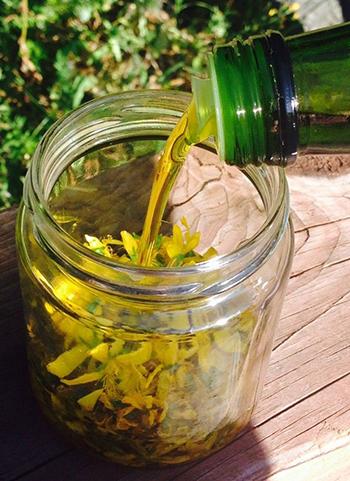
-
- Place a lid on the far
- Label it with the contents and date
- Place the jar in a dark cupboard
- Leave the oil to infuse for 6 to 8 weeks
- Strain the oil using muslin or cheesecloth.
The quick method:
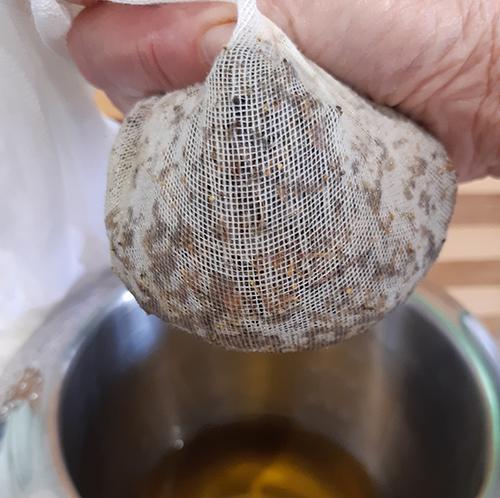
-
- Leave the jar open
- Place the jar of oil into a small pot that contains 2 inches / 5 centimeters of water
- Ensure no water can get into the jar
- Turn the heat on low
- Monitor the oil to make sure it does not get too hot or it will burn
- Heat the oil for 2 to 3 hours
- Strain the oil using cheesecloth or muslin.
The solar method:
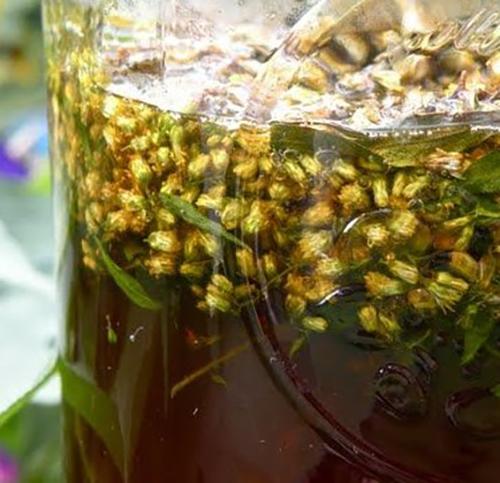
-
- Cover the jar with a clean piece of fabric, not a lid
- Place the jar somewhere it will be in the sun for several hours each day
- Leave the oil to infuse for 1 to 3 weeks
- Strain the oil using muslin or cheesecloth.
2. Making The Salve
Ingredients
- ½ cup of Goldenrod infused oil
- 1 ½ tablespoon of beeswax
Method
- Pour the oil into a heat-proof container like a stainless-steel bowl
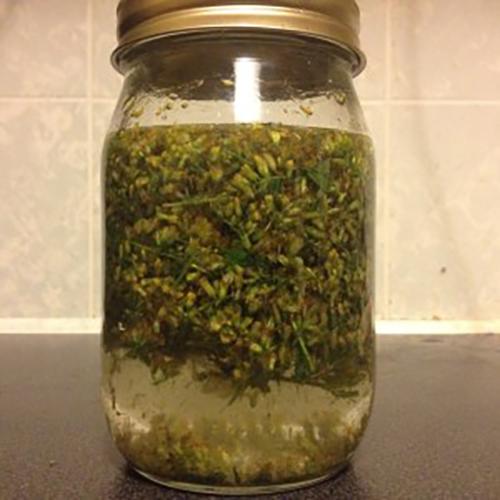
- Place the container in a small pot that contains 2 inches / 5 centimeters of water
- Ensure no water can get into the jar
- Turn the heat on medium-low
- Heat the oil gently
- Add the beeswax
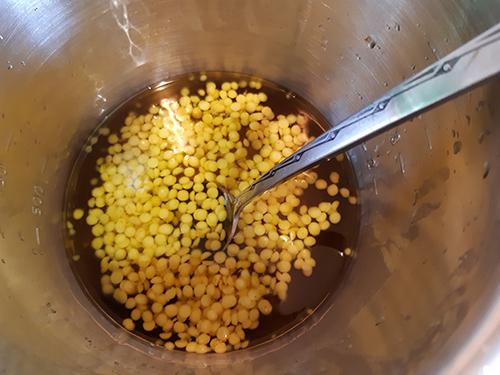
- Continue to warm the oil until the beeswax has all melted
- Pour the mixture into clean tins or jars
- Leave the jars until the salve cools and sets
- Place the lids on the tins or jars
- Label the containers.
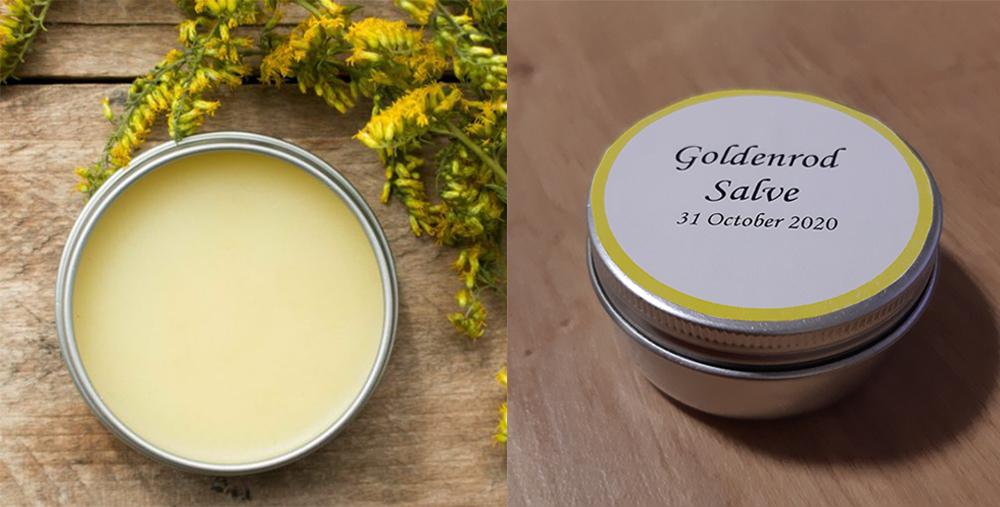
This salve is effective for painful muscles and joints or dry skin and is rubbed into the affected area 2 to 3 times a day.
Dosage
As with most other remedies, including herbal or plant-based ones, how much you can safely use depends on several factors. These include which preparation it is, what you are using it for, your overall state of health, your age, medications you are currently on, and any medical conditions you suffer from.
It is also worth keeping in mind that the absence of clinical studies means that there is currently little to no scientific data about Goldenrod doses. The best advice, therefore, is that you follow the instructions provided by your healthcare provider and/or the product manufacturer.
How to Preserve This Plant
Given the most potent part of the Goldenrod is the flower head, this is usually the only part that is dried and preserved for later use. It’s not difficult to dry this plant material.
You can hang bunches of cut flower heads in a warm, well-ventilated area until the flowers become dry and crunchy to the touch. Alternatively, cut the heads into smaller pieces and spread them out over a clean paper towel or dishcloth. Make sure that the plant material is spread in a single layer so that air can circulate.
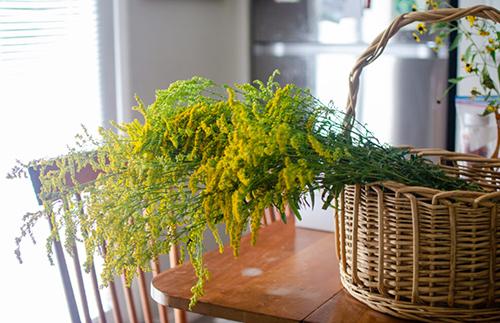
Fully dried Goldenrod will stay usable for up to 12 months if it was 100% dry and it’s stored in airtight containers. A significant loss of color may mean that it’s time to throw the herb away.
What Plants Resemble Goldenrod?
There are over 75 different species of goldenrod and 20 species of ragweed native to the United States. Goldenrod gets the blame for your itchy eyes and runny nose, but the culprit is actually ragweed. Both plants are members of the Asteraceae family, grow in roadside ditches and open fields, and bloom at the same time.
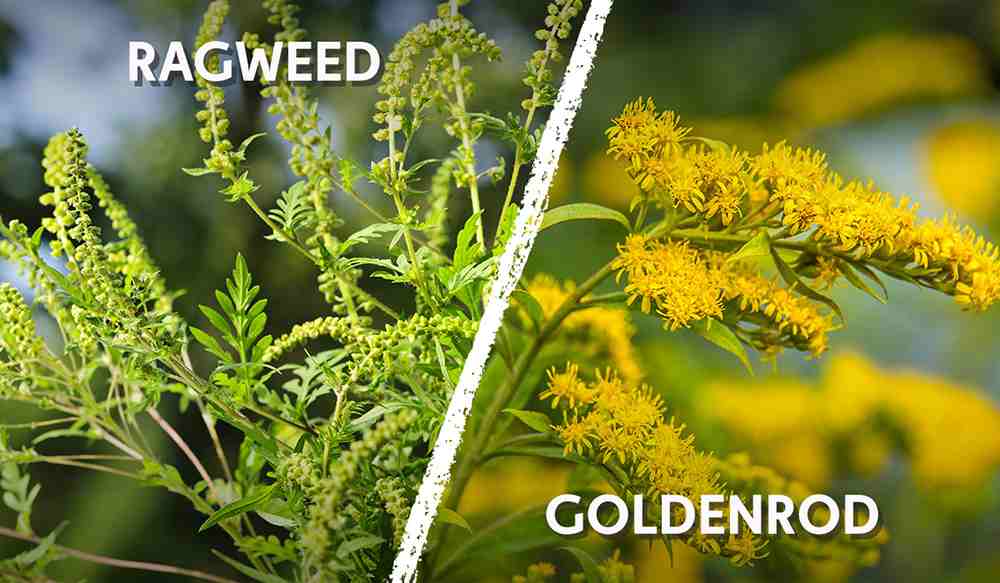
Goldenrod flowers contain nectar to attract pollinating insects, and the large, heavy pollen grains attach to the insect bodies. It is an important nectar source for pollinators. Ragweed flowers do not contain nectar, and the plants are dependent on the wind to transfer the small, lightweight pollen. This pollen has the ability to blow for miles. A single ragweed plant is capable of producing over a billion pollen grains.
Warning and Cautions
Just because a substance is natural does not mean that it does not pose a risk. This is true of Goldenrod remedies as it is for any other plant-based preparations.
This herb should not be given to children or pregnant or breastfeeding women. The following individuals should check with their health practitioner before using Solidago remedies:
- Anyone with a known allergy to members of the Asteraceae / Compositae family such as chrysanthemums, marigolds, daisies, and ragweed
- Those with high or low blood pressure
- Patients with osteoporosis
- Individuals suffering from kidney, heart, or lung disease
- Patients taking Lithium, diuretics, or blood pressure medication.
It is strongly recommended that you talk to your healthcare practitioner before you use any Goldenrod remedies, even if you don’t fit into one of the above categories.
You may also like:
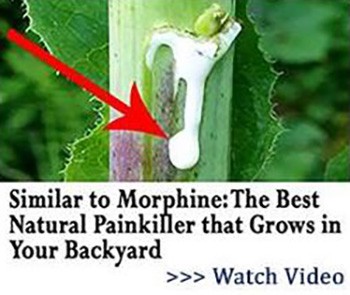 Plant of The Week: Marshmallow
Plant of The Week: Marshmallow
10 Plants That you Should Never Plant Together (Video)
How to Make Cabbage Bandages to Treat Inflammation and Joint Pain
15 Common Wild Plants You Never Thought Were Edible
How to Make an Alcohol Extraction with Goldenseal to Fight Inflammation

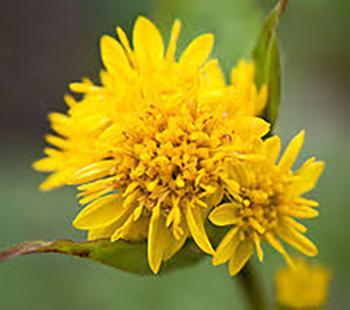
Hello,
First, thank you very much for the great information!
This summer I discovered a newcomer in my little garden: an attractive yellow airy plant that I was able to identify as Grass-leaved Goldenrod. Is it also a Solidago? Does it have the same medicinal qualities? I loved this plant, so did bees :). Thank you!
Maria
Hi Maria,
Thank you so much for your feedback.
We really appreciate it.
Grass-leaved Goldenrod can be distinguished from other Goldenrods (Solidago spp.) by its narrow leaves, bushier tops and typically smaller and more numerous flower clusters. This species is very similar and easily confused with Great Plains Goldenrod (Euthamia gymnospermoides)
The Grass Leaved Goldenrod (Euthamia/Solidago graminifolia) is considered a good antiseptic
An infusion of the dried powdered herb can be used.
A decoction of the root has been used in the treatment of chest pains and lung problems.
God bless!
Did you know need love goldenrod…..we are beekeepers and come September if we harvest honey….OMG….the hives as well as the honey are pungent ! The smell from the hives can be detected from quite a distance. Not to be gross but they smell live an old gym bag ! The honey is strong in smell (not so stinky) and wonderful for fall allergies. Just a fyi.
I use golden rod tea to help my husband pass kidney stones. I also just like it as a refreshing tea myself